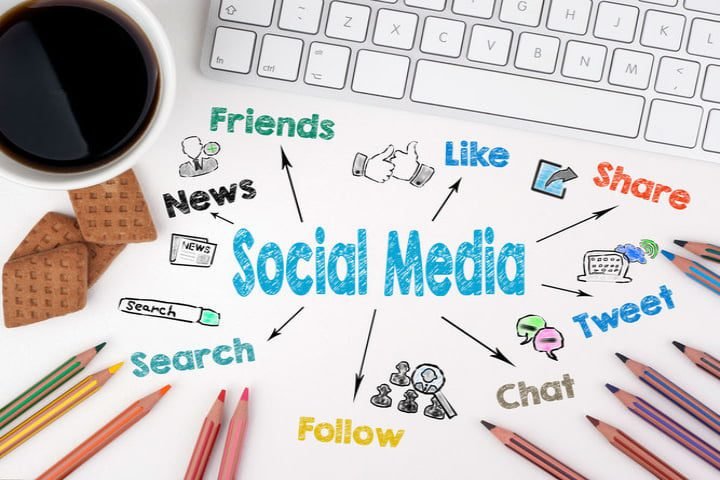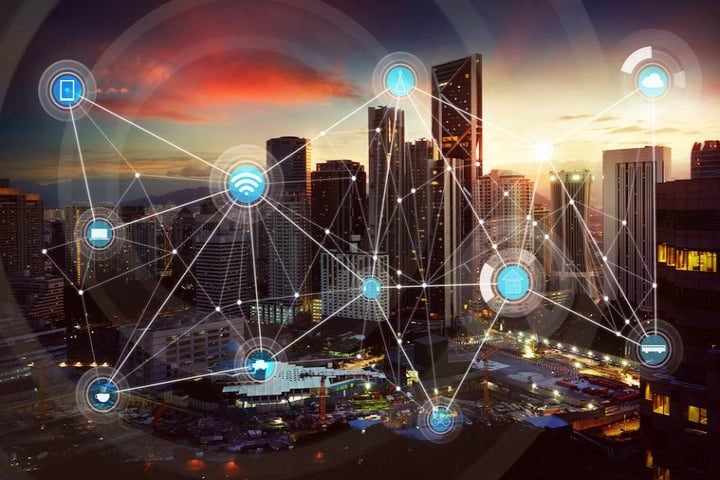In today’s digital age, online media has revolutionized how we communicate. It has made an enormous difference in our lives. The transformative role that online media plays in shaping our communication landscape is critical to understand for day-to-day effective communication as well as to score marks in the UGC NET Mass Communication and Journalism exam. The topic of online media is part of Unit 3 of the Reporting and Editing of UGC NET Mass Communication syllabus.
The Changes in Communication
Online media have been at the forefront of the changes in communication. It has brought people from all over the world together across time zones and distances.
People no longer write letters or use landline phones to talk to each other. Instead, they use instant messaging, video calls, and social media.
This shift has changed not only how fast we talk to each other but also how we talk to each other. People can have deeper and more exciting talks through online media.
Text, pictures, videos, and emojis have made it possible for us to describe ourselves in more complex and exciting ways.
Connecting People and Ideas

Online media has broken down the walls that used to prevent us from bringing people and ideas together. For instance, social media sites have brought people from different areas together.
Not only do you want to stay in touch with family and friends, but you also want to find people who share your values, hobbies, and passions.
People with similar interests from all over the world can connect on sites like Twitter and LinkedIn and have deep talks, share ideas, and even work together on projects.
More people can connect worldwide without being physically present due to online media.
Online Media’s Role in spreading information
Online media is a key means to spread information. Real-time sharing of news, events, and developments can reach millions of people instantly.
Also, online media allows for a two-way flow of information. In addition to getting information, users can also participate in debates, discussions, and the sharing of views. Information consumption is a fun and engaging process when you use interactive media online.
Online media have been critical to social activism. Social media gives movements and causes a more prominent voice, which activists can use to get people to support them, raise awareness, and make changes.
Let’s explore some landmark instances where online media played a decisive role in driving social activism:
The Arab Spring and Social Media Revolution started in late 2010 and marked a turning point in social activism. Facebook and Twitter helped coordinate protests, share information, and raise international awareness. Hashtags, viral videos, and real-time updates helped activists fight authoritarian regimes.
In 2013, the #BlackLivesMatter campaign emerged in response to systematic racism and police brutality against Black Americans. Social media and video-sharing sites proved essential for capturing police aggression, coordinating protests, and discussing racial injustice. The movement’s viral hashtag raised awareness and global support for the cause.
The 2017 #MeToo campaign encouraged sexual harassment and assault survivors to speak out. Social networks and blogging platforms gave survivors a safe forum for speaking out and highlighting the issue. The movement’s global impact has changed workplace rules, legal reforms, and gender-based violence awareness.
In 2014, Hong Kong’s pro-democracy Umbrella Movement utilized online media, including social platforms and messaging apps, to organize and coordinate mass protests. Online media was a vital tool for disseminating information, sharing images and videos, and documenting the movement’s progress.
Strategies for Effective Digital Communication in Online Media

Online media is a significant game-changer in communication in this digital age. Let’s discuss effective strategies for managing online media and optimizing your digital communication efforts.
Creating a Content Calendar
To effectively manage online media, start by creating a well-planned content calendar. This calendar will serve as a content publication roadmap. It ensures consistent, timely, and audience-relevant messaging.
A content calendar should include industry- or niche-specific dates, events, and milestones. By aligning your content with these dates, you can capitalize on trends and engage your audience. Your calendar should also include time for content creation, revision, and publication to streamline the process.
Content tailored to target audiences
One size doesn’t fit all in online media. Content must be tailored to distinct target populations within your more extensive audience. You must understand each audience segment’s demographics, preferences, and pain areas to do this.
Segmenting your audience lets you develop content for specific groups. For example, a fashion brand may create content tailored for young fashion enthusiasts and inspiration for working women. By understanding the unique needs of these segments, the brand can engage with each group more effectively.
Branding and messaging consistency
Online media management requires consistency. Branding and messaging should be consistent across platforms and content. The audience should easily recognize a brand’s identity, from the logo to the tone of voice.
Effective digital communication requires consistency to develop trust and credibility.
Data-driven decision-making
Online media management is not guesswork. Data should direct decisions. Analytics technologies can reveal audience behavior, engagement, and content performance.
Analyzing this data reveals what works and what doesn’t. Find out what content, posting times, and platforms work best. This allows us to refine our online media strategy continuously, making it more effective over time.
Scheduling and Automation

Scheduling and automation tools can make online media management more efficient and less time-consuming. These tools let you prepare and schedule content in advance, maintaining an effective online presence.
For example, social media management platforms like Hootsuite and Buffer let you schedule posts across various networks, freeing up your time for other important activities. Automation tools in email marketing platforms can send tailored emails based on user activity, improving online media management.
Engagement and Community Building
Effective online media management involves engaging with your audience and establishing a community, not just creating content. Answer comments and emails quickly, and encourage dialogue. This builds community and promotes your brand.
Engage your audience in user-generated content initiatives to share their brand experiences. Actively connecting with your audience builds brand loyalty and word-of-mouth.
Monitoring and Crisis Management
Monitoring online media is vital to addressing issues promptly. Watch for brand, product, and service mentions. Mention, and Brandwatch can track business interactions.
Prepare a crisis management plan for negative feedback or a crisis. Respond professionally, answer concerns, and resolve issues. Your answer to issues on online media might boost or hurt your reputation.
Regular Performance Analysis
Assess the performance of your online media initiatives regularly. Identify key performance indicators (KPIs), like engagement rates, conversion rates, and website traffic, that support your business goals. Use these KPIs to measure the success of your online media campaigns.
How Social Media Algorithms Work
Hidden algorithms control what appears on a social media page. Complex mathematical formulae customize the social media experience based on the user’s activity and interests.
In essence, social media algorithms aim to serve the content a user will most likely engage with. They analyze the post’s timing, relevance to user’s interests, and popularity among their contacts.

Role of Engagement Signals
Signals of engagement keep social media systems running. These signals include likes, comments, shares, and clicks. When a user interacts with a post by liking it or leaving a comment, it sends a strong signal to the algorithm that the content is interesting.
The more engagement a post receives, the more the algorithm will prioritize it. This is why we often see posts with many likes and comments at the top of our social media feeds.
User Data and Personalization
Social media platforms have a lot of user data. They track your age, location, interests, and platform usage. This data helps the algorithm customize your feed to your preferences.
If you like cooking posts, the algorithm will show you more. Personalization improves the user experience by showing relevant content.
Social media algorithms prefer fresh content. However, not all content is time-sensitive. Some evergreen posts, such as inspirational quotes or how-to guides, remain relevant over time. The algorithm balances content type with recentness for a balanced feed.
Each social media platform has its own unique algorithm. Facebook’s algorithm, EdgeRank, focuses on the posts that generate discussions and interactions. To optimize your content for Facebook, encourage your followers to like, comment, and share your posts.
Twitter’s algorithm seeks to show you the most relevant tweets on your feed. Apply relevant hashtags, interact with your followers by replying and retweeting, and write content that starts a conversation to get the most out of Twitter’s algorithm.
Instagram’s algorithm prioritizes engagement by favouring content like videos, stories, and carousel posts. For success on Instagram, use relevant hashtags, create visually appealing content, engage with your followers, and post consistently.
Understanding the algorithms of different social media platforms and working with them is crucial for effective online media management.




